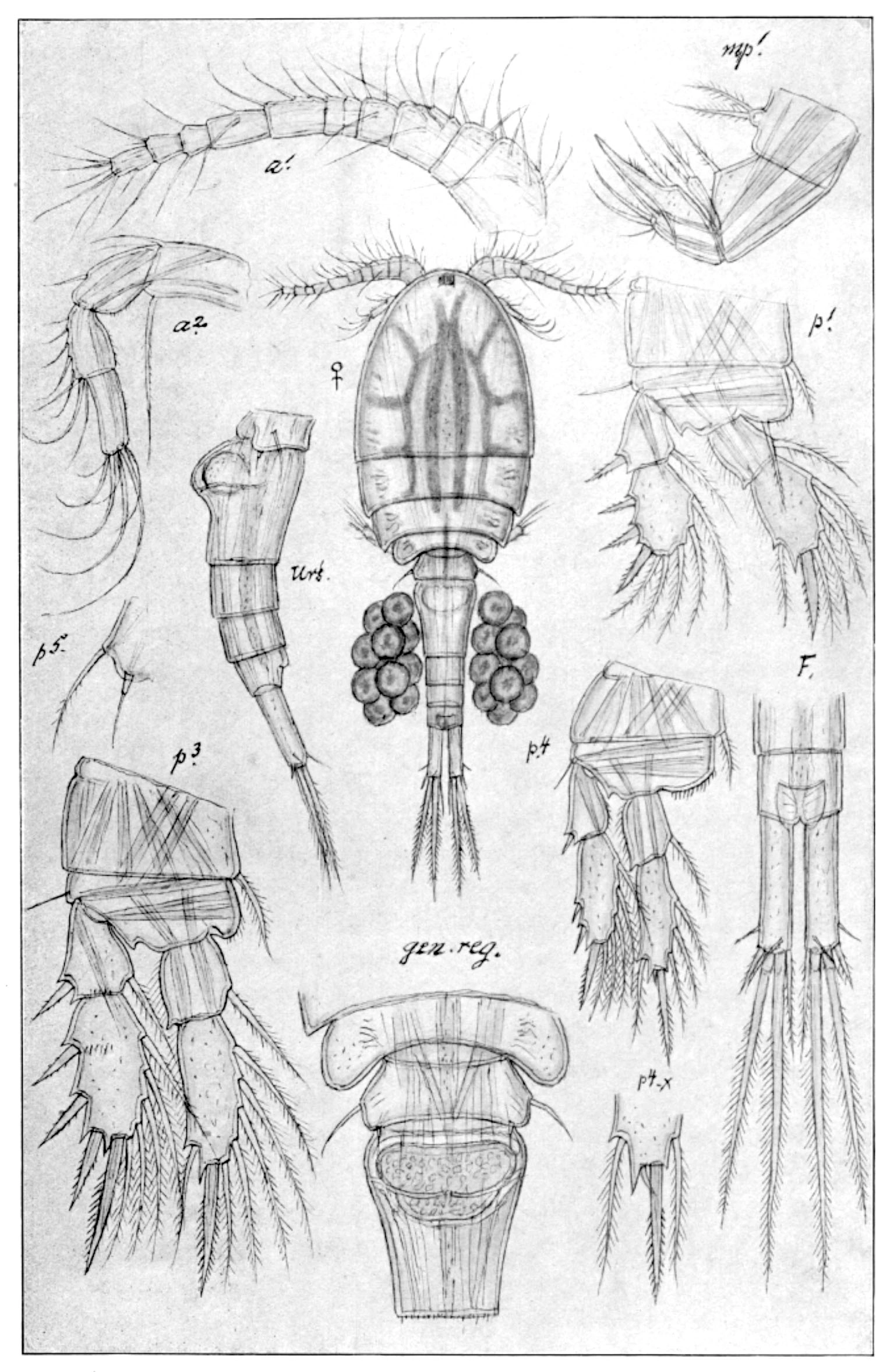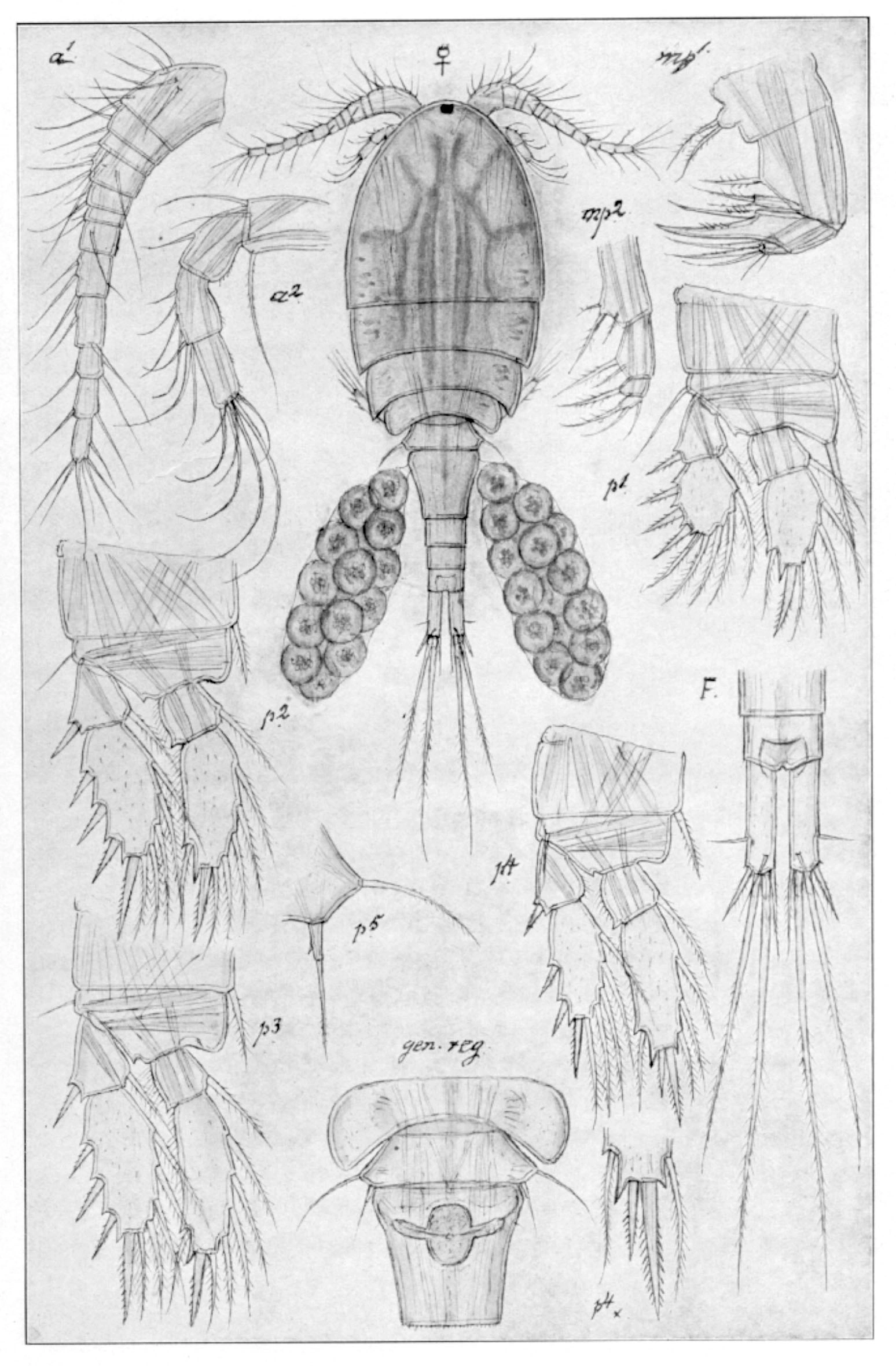Cryptocyclops bicolor
The tail and anterior antennae in Cryptocyclops bicolor exhibit a beautiful golden yellow or orange hue. It is the smallest cyclopoid and the great majority of records are from neutral, electrolyte rich lowland localities.
Key characteristics
Cryptocyclops bicolor (female)
Cryptocyclops bicolor is the only species of this genus in Norway. It is smaller than any other cyclopoids. It may resemble Microcyclops varicans having a relatively short and stout body form. In both species the lateral seta is attached close to the end of a relatively short furca. However the last thorax segment is less protruded and the last pair of legs (p5) are more reduced in C. bicolor than in M. varicans. The antennas of C. bicolor and M. varicans have respectively 11 and 12 segments. Its colour is rather peculiar, while the anterior division is nearly colourless, the tail and anterior antennae exhibit a beautiful golden yellow or orange hue.
Female: Length 0.6–0.8 mm
Male: Length 0.5 mm
Ecology and distribution
G.O. Sars found this species in small grassy ponds in Oslo. Since the late 1980's the species has been found in about 3 % of the localities, both in ponds and in the littoral of lakes. Except two, all records are from south/southeastern parts of Norway. The great majority of records are from neutral, electrolyte rich lowland localities. The species is truly overlooked because of its small size.
| Vitenskapelig navn | < 4,5 | 4,5 - 4,9 | 5,0 - 5,4 | 5,5 - 5,9 | 6,0 - 6,4 | 6,5 - 7,0 | 7,0 - 7,4 | > 7,5 |
|---|---|---|---|---|---|---|---|---|
| 0 | 0 | 0,4 | 1,2 | 3,4 | 4,1 | 4,7 | 8,7 |
| Vitenskapelig navn | < 1,0 | 1,0 - 1,4 | 1,5 - 1,9 | 2,0 - 2,9 | 3,0 - 3,9 | 4,0 - 4,9 | 5,0 - 6,9 | 7,0 - 9,9 | > 10,0 |
|---|---|---|---|---|---|---|---|---|---|
| 0 | 0 | 0,8 | 0,7 | 1,3 | 3,7 | 4,1 | 7,4 | 10,6 |
| Vitenskapelig navn | < 0,01 | 0,01 - 0,09 | 0,1 - 0,9 | 1,0 - 9,9 | 10,0 - 99 | 100 - 999 | > 1000 |
|---|---|---|---|---|---|---|---|
| 3,9 | 6 | 3,5 | 2,4 | 0,9 | 2,4 | 4,3 |
| Vitenskapelig navn | < 100 | 100-299 | 300-499 | 500-699 | 700-999 | >1000 |
|---|---|---|---|---|---|---|
| 3,8 | 4,8 | 1 | 0,3 | 0 | 0 |
Look alikes
Microcyclops varicans

